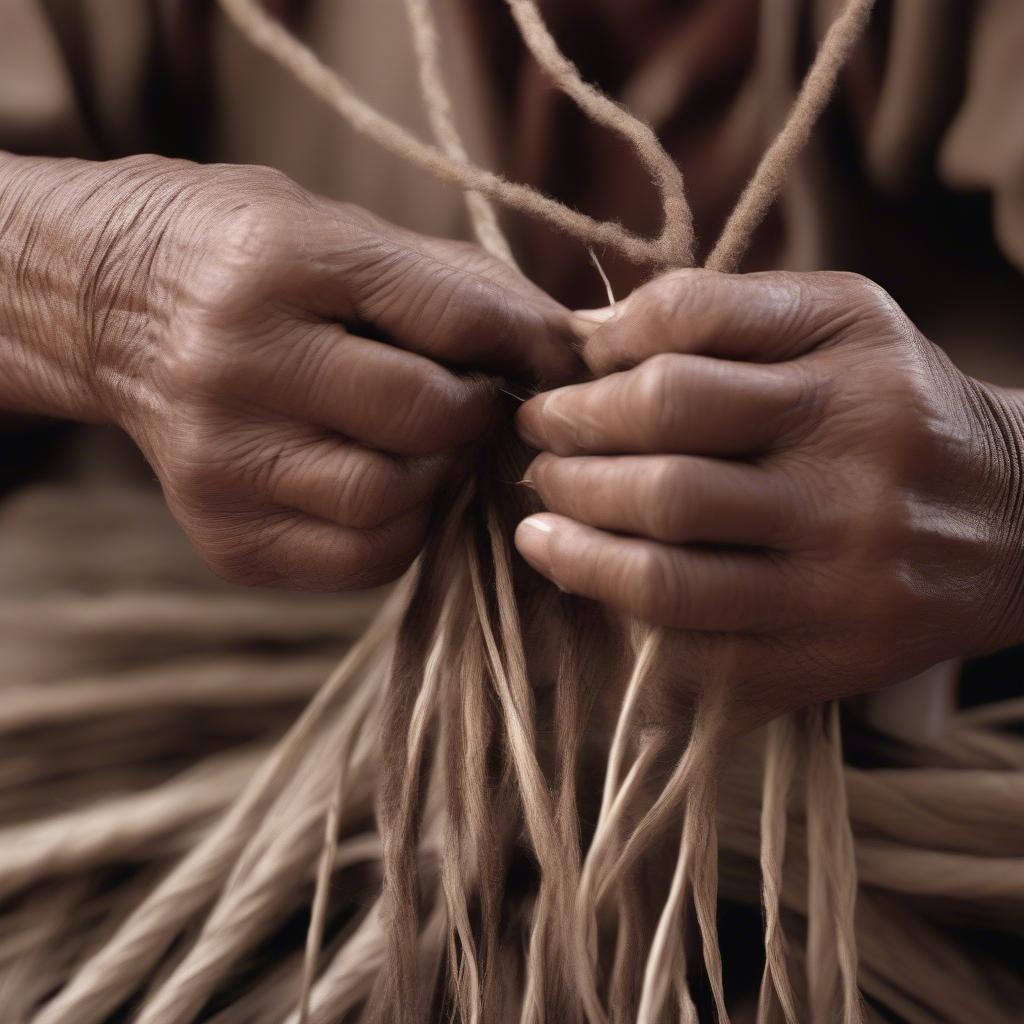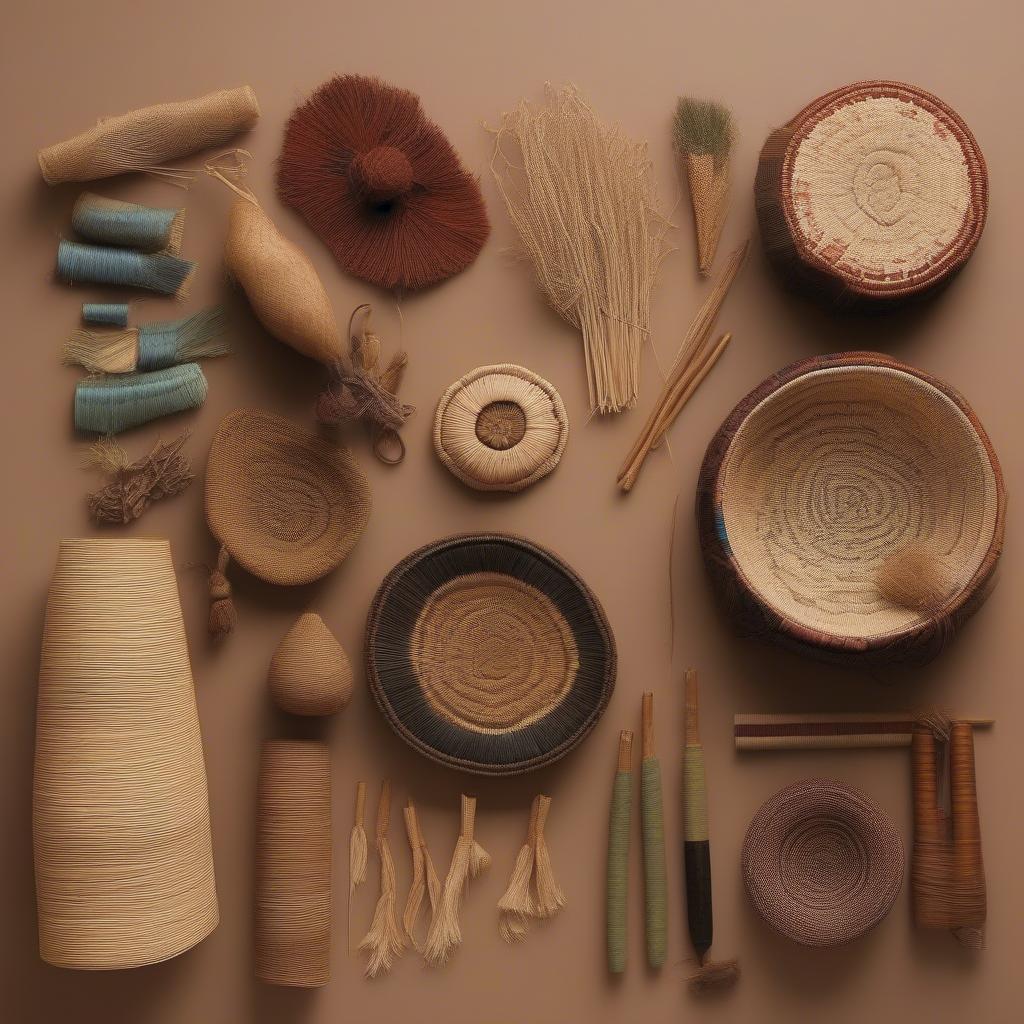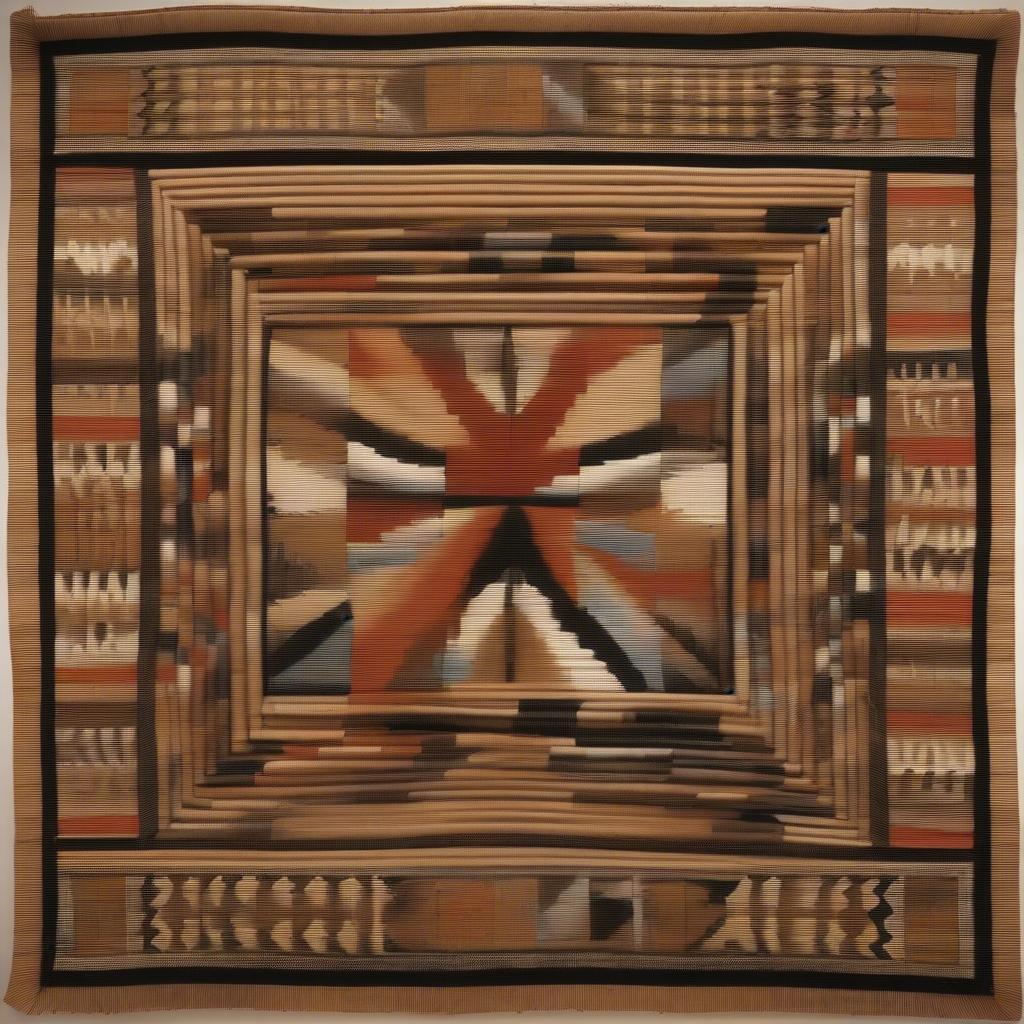Basket Weaving
Mastering Navajo Basket Weaving Techniques
Navajo Basket Weaving Techniques are more than just a craft; they represent a rich cultural heritage passed down through generations. These intricate designs and meticulous techniques create not only beautiful baskets but also tell stories and embody the spirit of the Navajo people. This article explores the fascinating world of Navajo basket weaving, delving into its history, materials, and diverse styles.
 A Navajo weaver demonstrating the intricate coiling technique used in creating a traditional basket
A Navajo weaver demonstrating the intricate coiling technique used in creating a traditional basket
A Deep Dive into Navajo Basket Weaving History
The origins of Navajo basket weaving are steeped in tradition, tracing back centuries. Initially, baskets were primarily utilitarian, used for gathering, storage, and ceremonial purposes. Over time, these functional objects evolved into intricate works of art, reflecting the unique artistic sensibilities of the Navajo people. The earliest Navajo baskets were primarily coiled, using sumac and willow, and often incorporated natural dyes for decoration. This style continues to this day, with weavers preserving and innovating upon these ancient methods. Learning about the history of this craft provides a deeper appreciation for the skill and cultural significance embedded within each basket. You can learn more about basket weaving techniques in our underwater basket weaving 101 course.
Essential Materials in Navajo Basket Weaving
The materials used in Navajo basket weaving are carefully selected from the natural world, reflecting a deep connection to the land. Sumac and willow are common choices for the weaving foundation, while other natural materials, such as yucca and rabbitbrush, are used for decorative elements. The preparation of these materials is a crucial step, involving careful harvesting, processing, and dyeing, often using traditional methods passed down through generations. This intimate knowledge of the land and its resources is integral to the Navajo weaving tradition.
 Various natural materials used in Navajo basket weaving, including sumac, willow, and yucca
Various natural materials used in Navajo basket weaving, including sumac, willow, and yucca
Choosing the Right Materials for Your Project
Selecting the appropriate materials is crucial for achieving the desired outcome in your Navajo basket weaving project. Consider the function, size, and design of the basket when choosing your weaving materials. Sumac offers flexibility and strength, making it ideal for intricate coiled baskets. Willow, on the other hand, provides a more rigid structure, suitable for larger baskets and trays. The choice of decorative materials, such as yucca or rabbitbrush, can add unique textures and colors to your creation.
Exploring Different Navajo Basket Weaving Styles
Navajo basket weaving encompasses a variety of distinct styles, each reflecting regional traditions and artistic preferences. The coiled basket, characterized by its spiral construction, is a prevalent form, showcasing intricate designs and variations in coil thickness. Other styles, such as plaited and wicker techniques, demonstrate the diverse skills and creativity of Navajo weavers. You can find more information about this in our underwater basket weaving course.
 Examples of different Navajo basket weaving styles, including coiled, plaited, and wicker techniques.
Examples of different Navajo basket weaving styles, including coiled, plaited, and wicker techniques.
What is the most complex Navajo basket weaving technique?
The most complex Navajo basket weaving technique is arguably the finely coiled basket, often featuring intricate designs and extremely tight coiling, demanding immense skill and patience from the weaver.
“Navajo basket weaving is a testament to the ingenuity and artistry of the Navajo people,” explains renowned Navajo weaver, Mary Jane Begay. “Each basket tells a story, connecting us to our ancestors and the land.”
How long does it take to create a Navajo basket?
The time required to create a Navajo basket varies depending on the size, complexity of the design, and the weaver’s experience. A small, simple basket may take a few days, while a large, intricate piece can take weeks or even months to complete.
“The beauty of a Navajo basket lies not only in its aesthetic appeal but also in the deep cultural meaning it embodies,” shares another expert, Thomas Yazzie, a respected elder and master weaver. “It’s a connection to our heritage and a celebration of our artistic legacy.” If you’re interested in exploring job opportunities related to basket weaving, check out our page on underwater basket weaving jobs.
Conclusion
Navajo basket weaving techniques represent a profound artistic tradition, deeply intertwined with the cultural identity of the Navajo people. From the careful selection of natural materials to the intricate weaving processes, each basket embodies a unique story and a connection to generations past. By understanding and appreciating these techniques, we gain a deeper insight into the rich heritage and artistic legacy of the Navajo people. Do you want to know if there is a major in underwater basket weaving? See is underwater basket weaving a major. Check out also areas of expertise underwater basket weaving google.
FAQ
- What are the primary materials used in Navajo basket weaving?
- What are the different styles of Navajo basket weaving?
- How can I identify authentic Navajo baskets?
- Where can I learn Navajo basket weaving techniques?
- How are Navajo baskets used today?
- What is the cultural significance of Navajo basket weaving?
- How can I care for a Navajo basket?
When you need assistance, please contact us at Hanoi, Vietnam or Tech Avenue, Suite 12, San Francisco, CA 94105, USA. We have a 24/7 customer service team.
